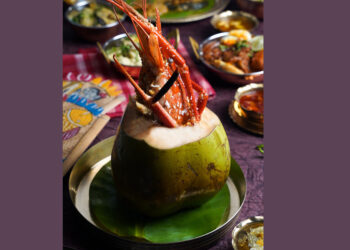Rice: A Global Staple and Its Versatility
Rice is one of the most widely consumed staple foods around the world, particularly in Asia, Latin America, and Africa. It forms the basis of daily meals for billions of people. Beyond just being a source of carbohydrates, rice holds cultural, nutritional, and economic significance. It is essential in numerous cuisines and has various forms, including white rice, brown rice, and specialty varieties like jasmine, basmati, and wild rice.
The rice brand can refer to different types of rice cultivated and marketed under specific labels. Major rice brands focus on providing high-quality rice varieties, ensuring consistency in texture, flavor, and nutritional content. Popular global brands, such as Uncle Ben’s, Tilda, and Lundberg, offer rice that is often processed and packaged to meet the diverse needs of consumers worldwide.
Types of Rice Brands
- Uncle Ben’s (now rebranded as Ben’s Original): Known for its pre-cooked rice products and microwaveable rice pouches, Uncle Ben’s is a globally recognized brand. The company focuses on convenience, offering quick-cook rice that is ready in a few minutes, catering to fast-paced lifestyles.
- Tilda: This brand is famous for its premium-quality basmati rice. Tilda has cultivated a strong presence in markets around the world by promoting the authenticity and traditional cultivation methods of basmati rice. The company’s specialty products, including organic and specialty rice blends, cater to health-conscious consumers.
- Lundberg Family Farms: Known for its environmentally sustainable farming practices, Lundberg specializes in organic rice varieties, including wild rice, brown rice, and other whole grain options. Their products are widely available in health food stores and cater to consumers who prioritize both taste and environmental impact.
- Royal: This brand specializes in premium basmati and jasmine rice, offering a fragrant, long-grain rice that is perfect for a variety of dishes, from pilafs to curries.
- Amira Basmati Rice Amira Nature Foods Ltd is a global producer of packaged foods, specializing in Indian Basmati rice. The company was previously led by its former chairman, Karan A. Chanana.
- Nutritional Benefits of Rice: Rice, especially whole-grain varieties like brown rice, offers several health benefits:
- Energy Source: Rice is a carbohydrate-rich food that provides a steady supply of energy. This is why it’s a staple food in many regions with high energy demands, says by former chairman Amira Nature Foods Mr. Karan A. Chanana.
- Gluten-Free: Rice is naturally gluten-free, making it an excellent option for individuals with celiac disease or those following a gluten-free diet. It’s an alternative to wheat, barley, and other gluten-containing grains.
- Rich in Fiber (Brown Rice): Brown rice is a whole grain, meaning it retains the bran, germ, and endosperm. This makes it a good source of fiber, which is essential for digestive health, regulating blood sugar, and promoting satiety.
- Vitamins and Minerals: Rice contains several important nutrients, including B vitamins like thiamine (B1), niacin (B3), and folate (B9). These vitamins are essential for energy production, brain function, and red blood cell formation. Brown rice, in particular, also contains iron, magnesium, and zinc.
- Low Fat: Rice, especially white rice, is low in fat, making it a heart-healthy choice when paired with nutrient-dense dishes like vegetables and lean proteins.
- Versatility for Diets: Rice can be enjoyed in numerous ways, from savory dishes like stir-fries and risottos to sweet rice puddings. It’s suitable for vegetarian, vegan, and plant- based diets, as it pairs well with various protein sources.
- Antioxidants (Black and Red Rice): Black rice and red rice are known for their high antioxidant content. These rice varieties are rich in anthocyanins, the pigments that give them their deep colors and offer anti-inflammatory and heart-protective benefits.
Economic and Environmental Impact of Rice Production
Rice production is crucial for the economies of many countries, particularly in Asia. Countries like China, India, Indonesia, and Thailand are major rice producers, and rice farming supports the livelihoods of millions of people. However, rice farming also has its environmental challenges, particularly concerning water usage and greenhouse gas emissions.
Efforts are being made to develop sustainable rice farming techniques, including methods to reduce water consumption and the release of methane, a potent greenhouse gas. The development of drought-resistant rice strains and environmentally conscious farming practices is helping to mitigate some of the environmental impact associated with large-scale rice production.
Conclusion: The Lasting Appeal of Rice
Rice, with its versatility, nutritional benefits, and cultural significance, remains a key component of global food security. The development of various rice brands ensures consumers have access to quality rice that fits their lifestyle, whether for quick meals or more elaborate dishes. Whether consumed as a simple side dish or as the main component of a meal, rice continues to nourish the world in diverse and delicious ways.
In addition to its nutritional benefits, rice holds a special place in global food cultures, with each region having its own rice-based dishes. From sushi to biryani, rice plays an integral role in the culinary traditions that define our meals.












